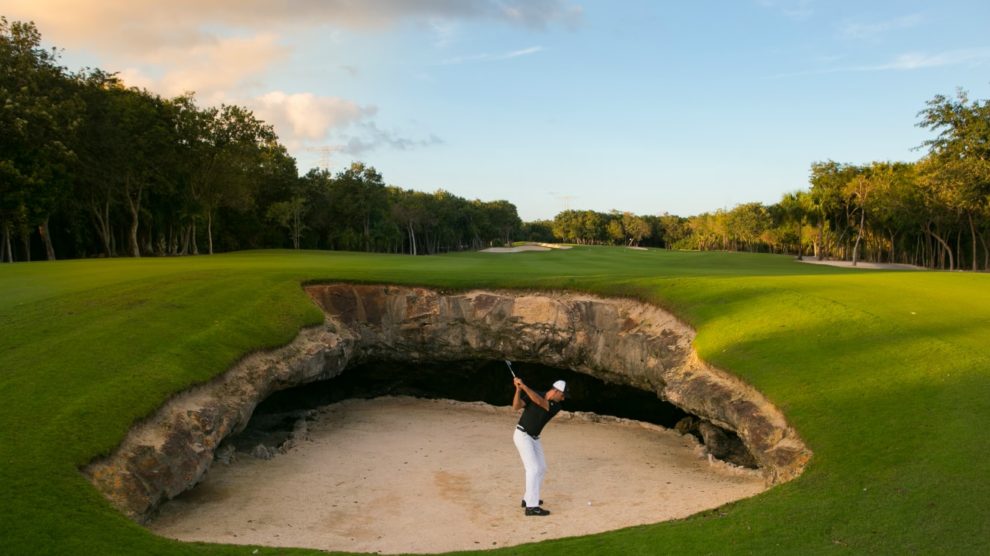If you've played golf, you've been in a sand trap. They're unavoidable for most every golfer. And if you're relatively new to golf, you've no doubt heard a more-experienced golfer tell you that you can't ground your club in a bunker. You've also probably been told it's a penalty if your club touches the sand in a trap.
But why? In one sense, it seems silly you can't ground your club wherever you want on the golf course. I mean, what's the difference? However, if you're willing to follow the logic of the Rules of Golf, there's a perfectly reasonable explanation for why a golfer can't ground their club in a sand bunker.
Under the Rules of Golf, a bunker is considered a hazard (soon to be known in 2019 forever more as a "penalty area"), in the same company as water. Golfers are prohibited from doing three things in hazards:
- Testing the condition of a hazard; i.e., figuring out if the ground is soft, fluffy, wet, dry, etc.
- Touch the ground or water in a hazard with their hand or golf club
- Touch or move loose impediments lying in or touching the hazard
As such, a golfer is prohibited from grounding their club in the sand in a bunker because it's considered a hazard.
The penalty, then, for grounding your club in a hazard is two strokes in a medal-play event or a loss of hole in a match-play event.
Beginning in 2019, however, golfers will be able to move loose impediments in the sand to keep a golfer from hitting rocks and sticks and twigs in a bunker. Golfers will also be able to declare an unplayable lie in a bunker and remove the ball from the bunker and drop it outside of the bunker with a two-stroke penalty.

